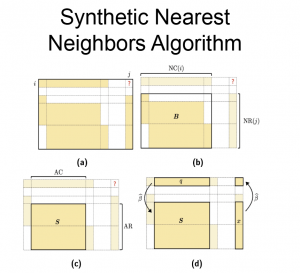Structural Factors and Racial Disparities in Evictions
Recent literature has found that neighborhood racial composition is correlated with eviction rate. We find, using the eviction lab dataset, that even after accounting for economic characteristics such as poverty rate, median income, median rent, that there is a significant relationship between neighborhood racial composition and eviction rate. Additionally, we use a singular value analysis to find that eviction patterns in select counties from 2010-2016 correspond more closely to patterns in racial composition than to poverty rates. From these results, we ask two questions: first, what are some of the mechanisms that contribute to racial disparities in eviction? Second, how can we use causal inference methods to study policies that attempt to mitigate some of these disparities?
Data
We use the Princeton eviction lab dataset, which contains nationwide census-tract level eviction data from 2000-2016, merged with other county characteristics.

Figure from Agarwal et. al, Causal Matrix Completion (2021)
Because of data missingness, we attempt to use a synthetic nearest neighbors algorithm to impute missing values [1]. To impute a value at a missing year, the algorithm constructs a synthetic county comprised of a weighted average of counties for which there are observations at the target year.
Eviction process

We study eviction processes across the U.S. to map out some of the critical points where interventions can take place.

Regression Analysis
Using a panel regression with fixed time and state effects, we find that there is a significant coefficient on neighborhood racial composition.

Clustering Analysis
 We separate census tracts into bins of high, medium, and low nonwhite residents, and find that across income rates, neighborhoods with high nonwhite residents consistently experience high-er average eviction rates. However, this result is limited because it doesn’t take into account changing eviction patterns over time. The next method we use is makes use of singular value decomposition to create low-dimensional representations of our existing matrix. Let our matrix A be comprised of columns that correspond to each county and rows that correspond to each year. Then we perform a singular value decomposition
We separate census tracts into bins of high, medium, and low nonwhite residents, and find that across income rates, neighborhoods with high nonwhite residents consistently experience high-er average eviction rates. However, this result is limited because it doesn’t take into account changing eviction patterns over time. The next method we use is makes use of singular value decomposition to create low-dimensional representations of our existing matrix. Let our matrix A be comprised of columns that correspond to each county and rows that correspond to each year. Then we perform a singular value decomposition
![]()

where the diagonal matrix D consists of the singular values. Next, using the columns of the right singular matrix U, we choose the first n columns of U so to eliminate some of the noise corresponding to the smaller singular values. From this we run the regression
![]()
Where ai corresponds to a vector of eviction rates for census tract i, and Ø1 represents the first right singular vector in the matrix U. The resulting coefficients ![]() represent a low-dimensional representation of eviction patterns over time in census tract i. Using this representation, we run a clustering algorithm on the first three coefficients and find that the distribution of each clusters is strongly correlated with the racial composition of neighborhoods, more so than it is with poverty rate in neighborhoods (e.g. cluster 4 above corresponds to neighborhoods with relatively higher eviction rates, whereas cluster 1 corresponds to neighborhoods with lower eviction rates).
represent a low-dimensional representation of eviction patterns over time in census tract i. Using this representation, we run a clustering algorithm on the first three coefficients and find that the distribution of each clusters is strongly correlated with the racial composition of neighborhoods, more so than it is with poverty rate in neighborhoods (e.g. cluster 4 above corresponds to neighborhoods with relatively higher eviction rates, whereas cluster 1 corresponds to neighborhoods with lower eviction rates).
Future work
Gentrification
One hypothesized mechanism that drives eviction is gentrification, the process by which lower-income residents are displaced by higher-income movers. Initial quantitative studies have found no relationship between gentrification and eviction; we aim to use a new method for predicting gentrification [4] to understand the relationship between increasing house prices and eviction and displacement rates.
NYC Right to Council Ordinance
In 2017, New York City passed a Right to Counsel law that guarantees that tenants will be represented in housing court. This law was implemented in 20 zip codes across NYC before beineg extended to the rest of the city. We aim to this setting as a natural experiment to understand the impact of tenants’ right to counsel.
Understanding causal structural mechanisms of eviction

Citations
1] Agarwal, Anish, et al. “Causal Matrix Completion.” arXiv preprint arXiv:2109.15154 (2021).
[2] Garboden, Philip ME, and Eva Rosen. “Serial filing: How landlords use the threat of eviction.” City & Community 18.2 (2019): 638-661.
[3] Hepburn, Peter, Renee Louis, and Matthew Desmond. “Racial and gender disparities among evicted Americans.” Socio-logical Science 7 (2020): 649-662.
[4] bunten, Preis, and Aron-Dine. “Re-Measuring Gentrification.”



